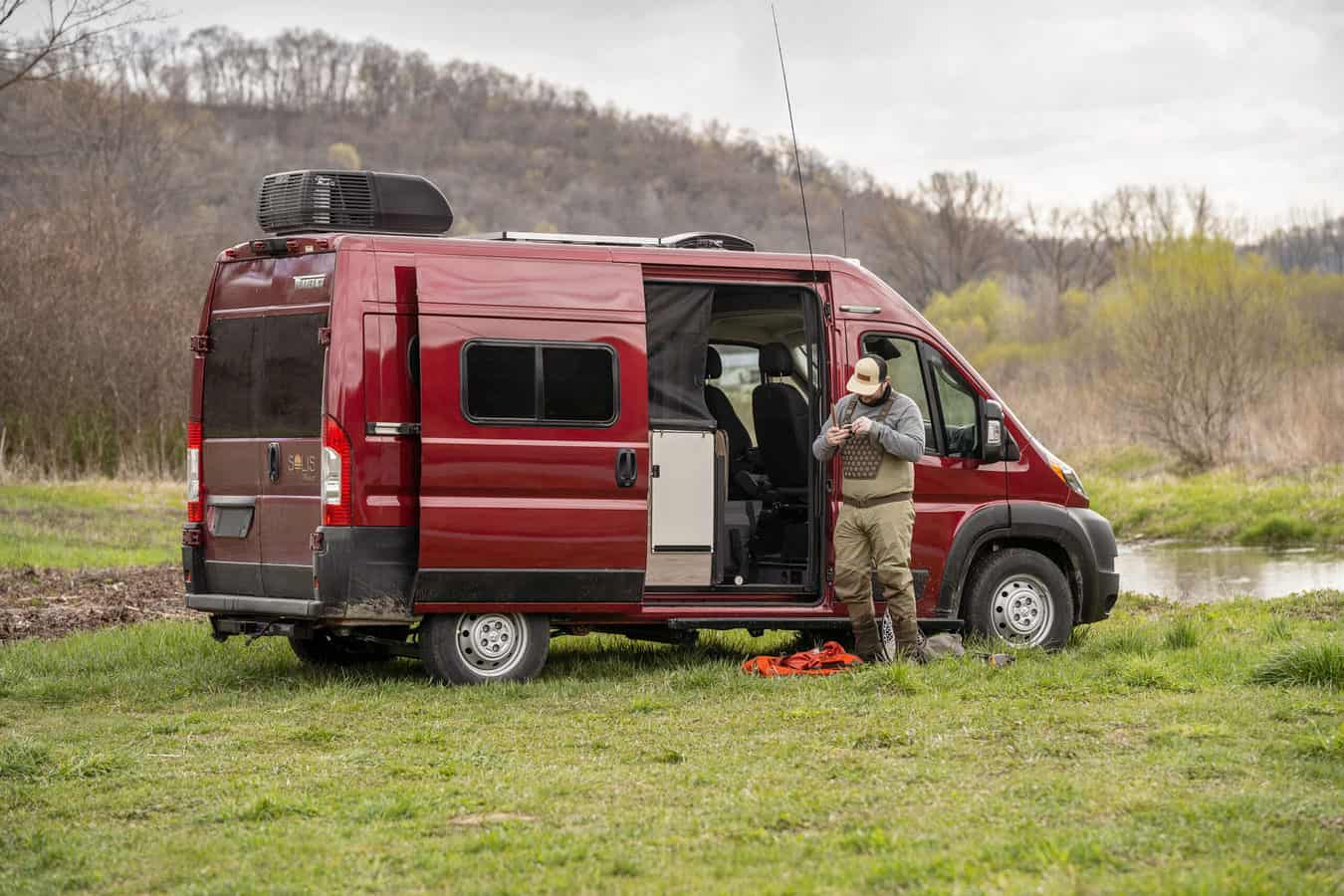
RVs come in a variety of styles, shapes, sizes, and price tags, each with their own benefits and faults. But it’s easy to differentiate between RV types and to figure out which one best fits your lifestyle needs.
The first step to understanding RV types is to know that there are two broad categories of RVs: towable and motorized.
Towable and motorized RVs
Towable RVs: These are trailers that are designed to be pulled by another vehicle. The type of vehicle needed to tow is determined by the size and weight of the trailer. After settling in a campsite, the owner/renter can unhitch their tow vehicle and use that vehicle to get around. There are a number of types of towable RVs: fifth-wheels, travel trailers, toy haulers, pop-up trailers, teardrop trailers, and truck campers.
Motorized RVs: Just as the name implies, these are RVs with engines, or motorhomes. These units have the “cockpit” and living space all enclosed under the same roof. Unless the user wants to dinghy-tow an approved vehicle or trailer, there is no hitching or unhitching involved. There are three types of classes of motorized RVs: Class A, Class B, and Class C.
The following list and explanation of RV types has been arranged based on the towable or motorized category. Each description includes a photo, brief summary, and the average size and price points for each of the RV types.
Towable RV types
Fifth-Wheels
The largest type of towable RV is the fifth-wheel. Fifth-wheels are easily recognizable for two reasons:
- (1) Fifth-wheel trailers are towed by a truck. At minimum, a full-size, one-ton truck is necessary when pulling a larger fiver. There are also many compact fivers that can be towed by mid-sized trucks. A fifth-wheel is attached using a special hitch saddle that’s located in the bed of the truck.
- (2) Fifth-wheels also have a distinctive front overhang, which is a raised forward section that hovers over the bed of the truck and houses the unit’s bedroom, living room, or entertainment area.

Fifth-wheels are popular due to their spacious interior and high ceilings. Manufacturers can up the living space using multiple slideouts. Many RVers also prefer their handling characteristics because they move more in concert with the tow vehicle than a travel trailer. This can make backing into a campsite a more straightforward affair.
Floorplans vary, and with the most basic configuration, units come complete with a bedroom, living room, kitchen, and bathroom. As will most RV types, the level of comfort, quality, and sophistication in design varies.
Fifth-wheel basics
- Length: 20–40 feet
- Weight: 7,000+ pounds
- Sleeping Capacity: 4–10
- Retail Price: $20,000 to $150,000
Travel trailers
Travel trailers are the most popular RV on the roads today. They are towed via a hitch on the A-frame at the front of the RV. The hitch connects to the hitch ball on the tow vehicle. Sway bars and weight-distributing devices are added to increase towing stability. A variety of brands and styles fit under this category of RV types.
Since travel trailers vary widely in size and weight, the type of vehicle capable of towing varies. Tow vehicles can include trucks, crossovers, SUVs, and even some motorcycles (in the case of more compact teardrops).
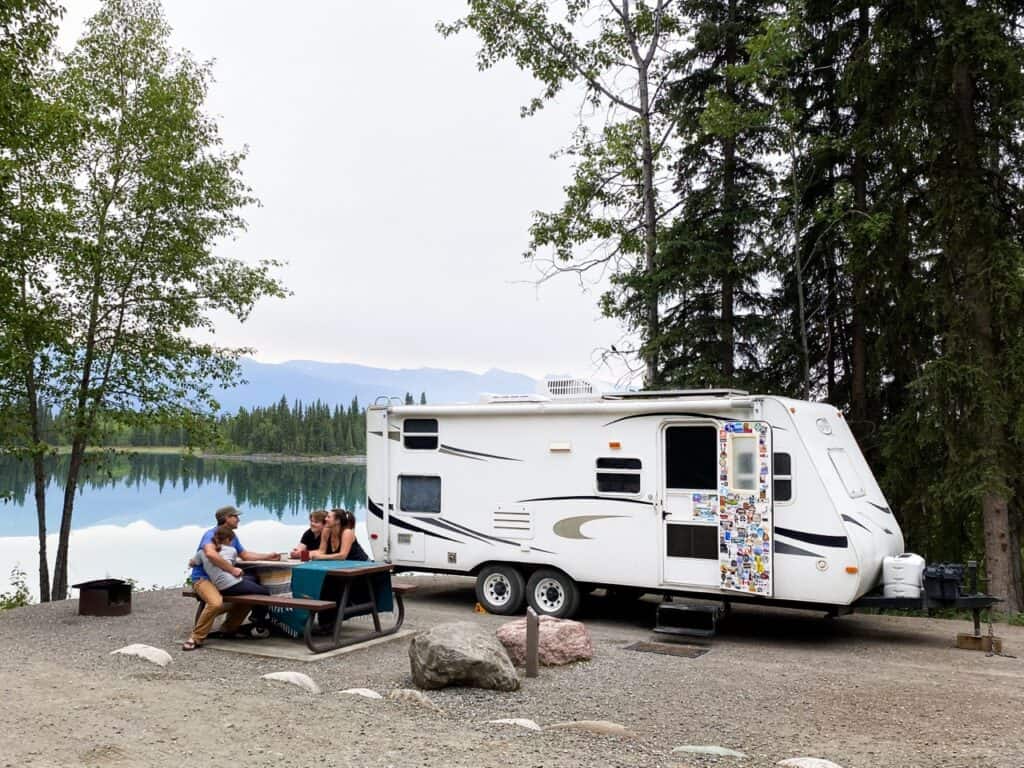
Travel trailers have a variety of floorplans, from simple to chic. They are self-contained units that include a living area, kitchen, bedroom, and bathroom. Most of today’s travel trailers contain at least one slideout.
The RV industry continues to evolve in travel-trailer design plans. Many companies have built hybrid models that include expandable sections in place of hard-sided slideouts. These fold-out portions are made of durable fabric, much like on a tent. They provide more square footage to the unit when extended but also decrease the unit’s weight, making it feasible to tow with a less heavy-duty vehicle.
Teardrop trailers are part of the travel-trailer category. A teardrop is a compact trailer that contains sleeping space, storage, and/or a galley area—but no bathroom.
Travel trailer basics
- Length: 8–42 feet
- Weight: 1,000–10,000 pounds
- Sleeping Capacity: 2–10
- Retail Price: $12,000–$150,000
Toy haulers
Toy haulers, or sport utility RVs (SURVs), are a subcategory of fifth-wheels and travel trailers (and some motorhomes). SURVs are popular because they are built with a garage area to carry cargo. The garages often include tie-downs for transporting the toys, plus extra storage space for gear.
Toys include motorcycles, ATVs, golf carts, snowmobiles, kayaks, and much more. The back of the toy hauler completely flips down and becomes a ramp to load and unload outdoor gear and vehicles. Besides storage space, this cargo area can convert into an additional bedroom or living space.
Toy hauler basics
- Length: 18–45 feet
- Weight: 3,000–16,000 pounds
- Sleeping Capacity: 4–10
- Retail Price: $25,000–$150,000
Pop-up trailers
Pop-up trailers are also called fold-out campers, pop-up campers, and folding camping trailers. They have a utility cargo trailer-like base and a heavy-duty canvas top. Hybrid models have hard wall sides as opposed to (or in addition to) fabric. This alternative provides better insulation. The trailer pops up using a manual crank or powered system.
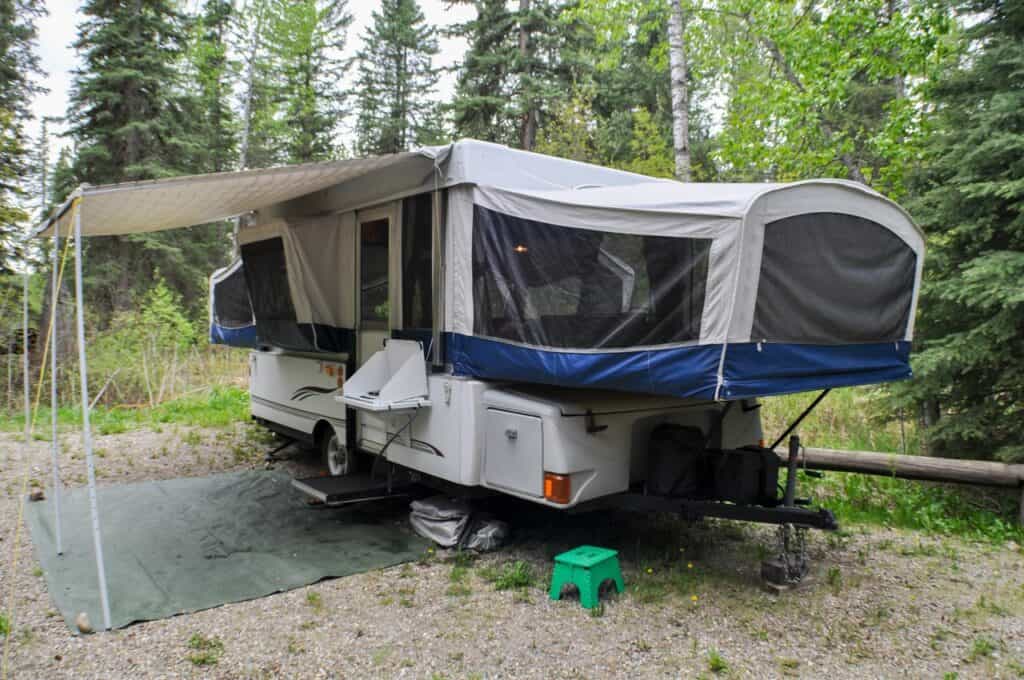
These trailers are great starters for people new to RVing because they provide a smooth transition from tent camping to towing and operating an RV.
The pop-up folds up into a compact unit about 4 feet high and is easy to tow since it has a low profile and is lightweight. Pop-up trailers are built with modest amenities and appliances as compared to other RVs. They lay out a decent introduction to learning about how an RV works. There are some nicely equipped exceptions but the price rises with the convenience.
Pop-ups are the most inexpensive towables and still provide enough room for 4–8 people to enjoy sleeping areas, a galley, and a sitting area. Not all models feature a bathroom. If there is one, it usually consists of a shower/toilet combination (known as a wet bath) at most.
Pop-up trailer basics
- Length: 8–20 feet
- Weight: 1,000 to 5,000 pounds
- Sleeping Capacity: 2–8
- Retail Price: $10,000 to $40,000
Truck campers
Truck campers fit snugly into the bed of pickups. These compact units may have an overhang that extends atop the cab and may even have slideouts and/or canvas extensions for additional headroom. The truck must have the capacity to handle the weight. Heavy-duty trucks are necessary for many instances. The floor length of the camper is dependent upon the size of the truck bed.

Truck campers contain areas to sleep, eat, and prepare food. They can also have a wet bath or toilet/shower combo. Some of the more luxurious ones even have a dry bath. The compactness of a camper truck makes off-roading a possibility too.
Truck camper basics
- Length: 6–20 feet
- Weight: 1,000 to 3,000 pounds
- Sleeping Capacity: 2–4
- Retail Price: $15,000–$65,000
Motorized RV types
Class A motorhomes
When people think of RVs, a Class A motorhome often comes to mind. Class A motorhomes look like a bus. They are equipped with a gas engine or a diesel engine. Due to their size and weight, these units are not the most fuel-efficient and nimble, so many RVers will dinghy tow a small vehicle in the back and use it to get around once they have settled at a campsite.
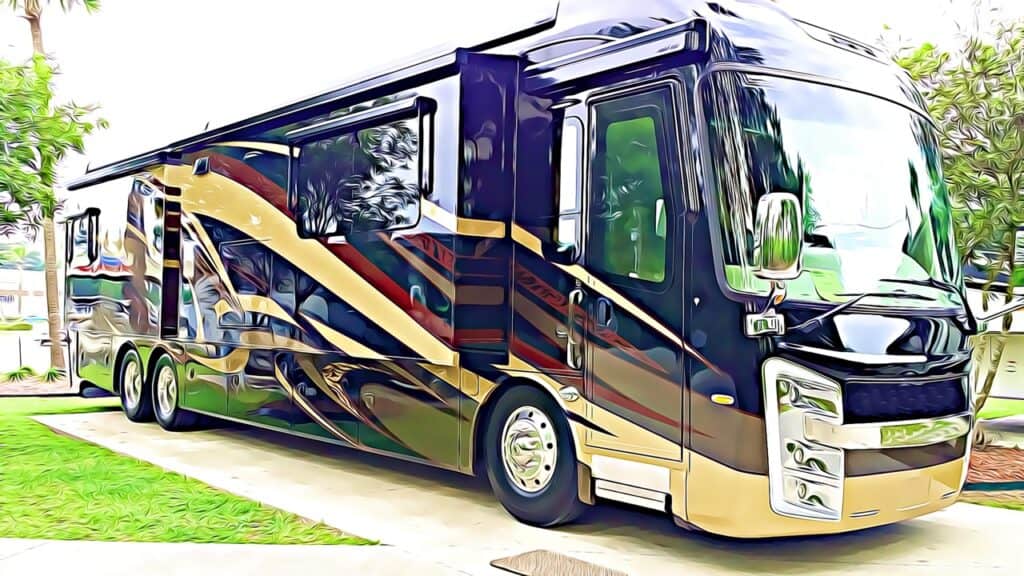
Some Class A motorhomes are called diesel pushers. These motorhomes have the diesel engine installed in the rear of the RV. A front-engine diesel (FRED), in contrast, has the engine mounted up front. Both have their advantages and disadvantages, but overall, diesel engines have a longer lifespan and are more durable than their gas-powered counterpart.
Class A motorhomes are the most sizable and expensive RV type on the market. Diesel units are more pricey than gas engines, and the more lavish models come at a high price as opposed to the more basic designs. Interior furnishings can be as luxurious as quartz countertops, tile floors, his and her bathroom sinks, walk-in closets, leather sectionals—you name it. Some Class A toy-hauler motorhomes are available.
Class A motorhome basics
- Length: 22–45 feet
- Sleeping Capacity: 6–8
- Retail Price: $140,000–$1 million-plus
Class B motorhomes
Camper van is a common name for Class B motorhomes. They are built on a van chassis and are the smallest, most fuel-efficient, and most agile member of the motorhome clan. They maneuver like a standard passenger vehicle and are outfitted with a gas or diesel engine. Again, Sprinter models add to the cost, as does 4WD capability. If you’re looking for a Class B-Plus designation here, you won’t find one. They technically don’t exist (see below in Class Cs).
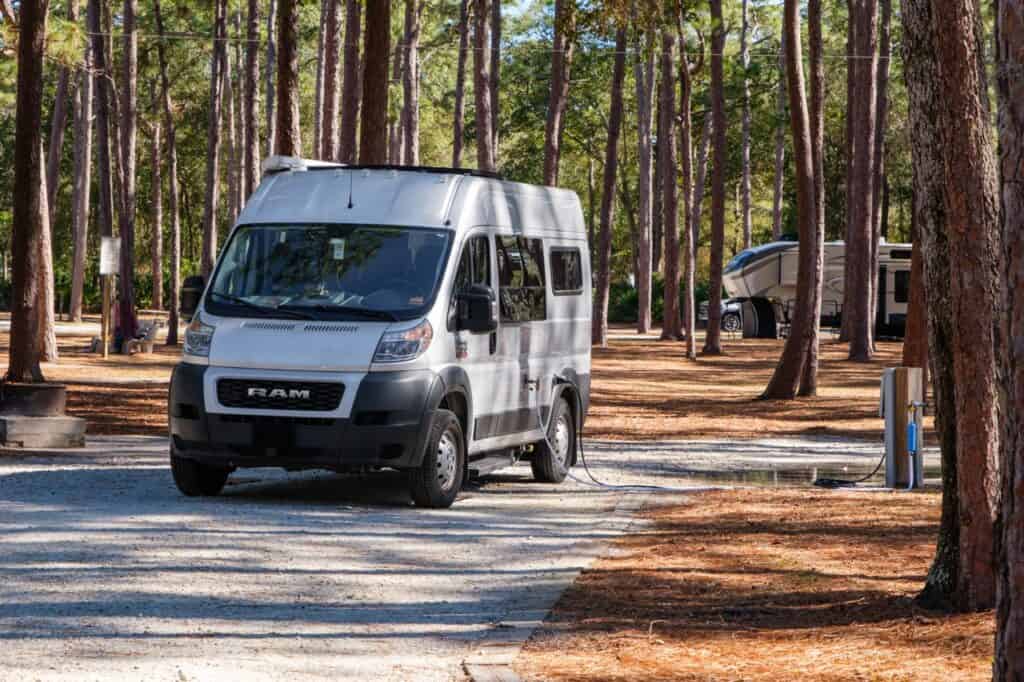
Since they are compact, the floorplans are designed with functionality and versatility in mind. Seats fold out into beds, Murphy bed layouts are popular, storage is carefully carved out, and enough corner room is made for a wet bath. Pop-tops are a popular option to increase sleeping capacity on Class Bs.
Class B motorhome basics
- Length: 20–26 feet
- Sleeping Capacity: 1–4
- Retail Price: $85,000 to $300,000
Class C motorhomes
The Class C motorhome has a notable attribute that sets it apart from Class A motorhomes. It features a “cab-over” profile that typically makes room for a bed or additional storage. Class Cs can also double as a toy hauler.
Class C’s are built on what is known as a cutaway chassis, which is a modified van (or or truck) chassis. You may hear larger Class Cs referred to as Super Cs, but that’s just ad-speak. They are technically Class Cs as well. Which brings us to the dreaded “Class B-Plus” designation mentioned above. There is no such thing. A so-called Class B-Plus motorhome is built on a van chassis that has been modified (or cutaway) to expand living space. By definition, that makes it a Class C motorhome.

Most Class Cs are not as large as some Class A motorhomes, so they can go to more places. Their familiar cockpit makes them desirable to many RVers. They are self-contained with areas for sleeping, eating/cooking, lounging, and taking a shower. Gas and diesel options are available. Keep in mind that opting for a Sprinter chassis (Mercedes-Benz) will add to the cost considerably.
Class C motorhome basics
- Length: 20–35 feet
- Sleeping Capacity: 4 to 8 people
- Retail Price: $80,000 to $450,000
Learn more about RV types
All RVs are not created equal. All of our needs and wants differ. When deciding on the best unit for you and your traveling crew, it’s important to understand what each RV provides and their pros and cons in comparison to your lifestyle. In this research stage, it doesn’t hurt to talk to other RVers about their experience with certain RVs. You can do this by logging onto platforms like iRV2 forums.



